Clint Talbott
 Elisabeth Sheffield, associate professor of English, won a $25,000 NEA Creative Writing Fellowship in Prose this year. Photo by Noah Larsen.In each of the past two years, a CU-Boulder faculty member has won a Creative Writing Fellowship from the
Elisabeth Sheffield, associate professor of English, won a $25,000 NEA Creative Writing Fellowship in Prose this year. Photo by Noah Larsen.In each of the past two years, a CU-Boulder faculty member has won a Creative Writing Fellowship from the CU Boulder students engage in conversation while studying abroad in China. The program to send students abroad to China has been buoyed by a $1.2 million gift from the Tang Fund of New York. This group was led by journalism Professor Meg Moritz in
CU Boulder students engage in conversation while studying abroad in China. The program to send students abroad to China has been buoyed by a $1.2 million gift from the Tang Fund of New York. This group was led by journalism Professor Meg Moritz in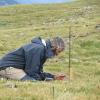 CU-Boulder has hired its first Colorado Chair in Environmental Studies, an endowed chair awarded to Daniel Doak, a conservation biologist known for his quantitative analysis of how different government policies could affect the populations of species ranging from sea otters, California condors, corals, and rare plants.
CU-Boulder has hired its first Colorado Chair in Environmental Studies, an endowed chair awarded to Daniel Doak, a conservation biologist known for his quantitative analysis of how different government policies could affect the populations of species ranging from sea otters, California condors, corals, and rare plants.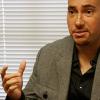 Hip-hop music could turn young people on to higher education, perhaps even persuade them to study at the University of Colorado Boulder.
Hip-hop music could turn young people on to higher education, perhaps even persuade them to study at the University of Colorado Boulder.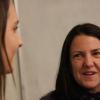 In February, Clare Boland and her professor, Rebecca Safran of ecology and evolutionary biology, are guest speakers in a new course at the University of Colorado Boulder that aims to explore innovative, creative and effective ways to convey climate-change science and its implications. That course, called “Inside the Greenhouse,” is team-taught by two faculty members: Beth Osnes and Maxwell Boykoff from theatre and dance and environmental studies, respectively.
In February, Clare Boland and her professor, Rebecca Safran of ecology and evolutionary biology, are guest speakers in a new course at the University of Colorado Boulder that aims to explore innovative, creative and effective ways to convey climate-change science and its implications. That course, called “Inside the Greenhouse,” is team-taught by two faculty members: Beth Osnes and Maxwell Boykoff from theatre and dance and environmental studies, respectively. Nate and Zach Huey are identical, 15-year-old twins, who, like most twins, are somewhat dissimilar. But the twins but have much in common. Both like Japanese comic books called Manga. Both read voraciously and have a vocabulary that shows it. And both have been studied since the age of 4 by researchers at the Institute for Behavioral Genetics at the University of Colorado Boulder.
Nate and Zach Huey are identical, 15-year-old twins, who, like most twins, are somewhat dissimilar. But the twins but have much in common. Both like Japanese comic books called Manga. Both read voraciously and have a vocabulary that shows it. And both have been studied since the age of 4 by researchers at the Institute for Behavioral Genetics at the University of Colorado Boulder.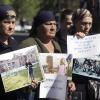 In Beslan, a city in the Russian Republic of North Ossetia, militants seized a school and took 1,200 hostages in 2004. In the end, 331 people died, and nearly 800 others were injured. Given the horrific violence and the fact that the hostage-takers were ethnic foes, observers expected a violent backlash along ethnic lines. But violent retribution was minimal, and victims largely responded with peaceful activism.
In Beslan, a city in the Russian Republic of North Ossetia, militants seized a school and took 1,200 hostages in 2004. In the end, 331 people died, and nearly 800 others were injured. Given the horrific violence and the fact that the hostage-takers were ethnic foes, observers expected a violent backlash along ethnic lines. But violent retribution was minimal, and victims largely responded with peaceful activism.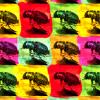 Beetles emerging from trees so early that they are often able to produce two generations a year, rather than only one, as historically has been the case. That finding, believed to be the first confirmation of this reproductive explosion, helps to explain the staggering scope of the current pine-beetle epidemic. Because of the extra annual generation of beetles, there could be up to 60 times as many beetles attacking trees in any given year, their study found.
Beetles emerging from trees so early that they are often able to produce two generations a year, rather than only one, as historically has been the case. That finding, believed to be the first confirmation of this reproductive explosion, helps to explain the staggering scope of the current pine-beetle epidemic. Because of the extra annual generation of beetles, there could be up to 60 times as many beetles attacking trees in any given year, their study found. [video:http://www.youtube.com/watch?v=ox9Y2NiNIl4]This video, posted on YouTube, captures a CU student perspective of the Telluride University Seminar at the Telluride Film Festival. This video was created by CU student William Jones, with
[video:http://www.youtube.com/watch?v=ox9Y2NiNIl4]This video, posted on YouTube, captures a CU student perspective of the Telluride University Seminar at the Telluride Film Festival. This video was created by CU student William Jones, with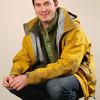 Thomas Andrews has a knack for framing American history unconventionally. In his award-winning book “Killing for Coal,” Andrews traced the central role of coal in Colorado’s economic growth, environmental change and social conflict. Now he’s turning
Thomas Andrews has a knack for framing American history unconventionally. In his award-winning book “Killing for Coal,” Andrews traced the central role of coal in Colorado’s economic growth, environmental change and social conflict. Now he’s turning

